Abstract
OBJECTIVE: This study compared two forms of high-frequency ventilation (HFV) with conventional volume ventilation (CON) in a primate model of inhalation injury to determine whether ventilatory mode was a determinant of pulmonary damage. SUMMARY BACKGROUND DATA: The authors previously reported that the prophylactic use of high-frequency flow interruption in patients with bronchoscopically diagnosed inhalation injury requiring mechanical ventilatory support resulted in a significant decrement in mortality. They hypothesized that a reduction in ventilatory mode induced pulmonary damage was in part responsible for their clinical results. METHODS: Fifteen adult baboons were randomized to one of three ventilatory modes (CON, high-frequency flow interruption [HFFI], or high-frequency oscillatory ventilation [HFO]) after moderate smoke injury. Ventilatory support was tailored to the same physiologic endpoints. After 7 days, the animals were killed and pulmonary pathologic changes were scored and compared. Repetitive physiologic and biochemical data were compared using analysis of variance for repeated measures. RESULTS: Physiologic endpoints were achieved in CON and HFFI, but not in HFO. Hemodynamic variables did not differ between CON and HFFI. The barotrauma index was greater in CON compared to HFFI (p < 0.05), despite similar PO2, FIO2, AA gradient, and PCO2. Animals treated with HFFI had significantly less parenchymal damage than those treated with CON (p = 0.03) or HFO (p = 0.0008). CONCLUSIONS: The prophylactic use of HFFI led to a significant decrement in ventilatory mode induced pulmonary damage and offers an explanation for the decreased mortality in inhalation injury patients treated with HFFI.
Full text
PDF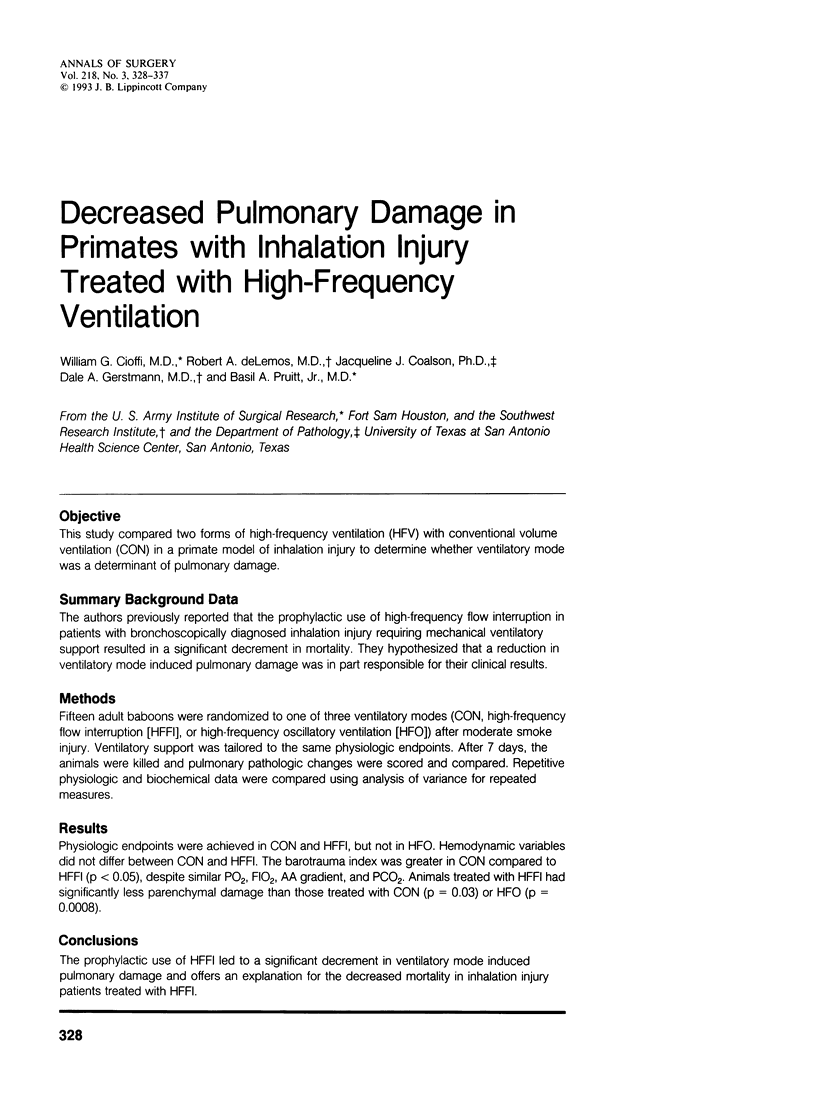
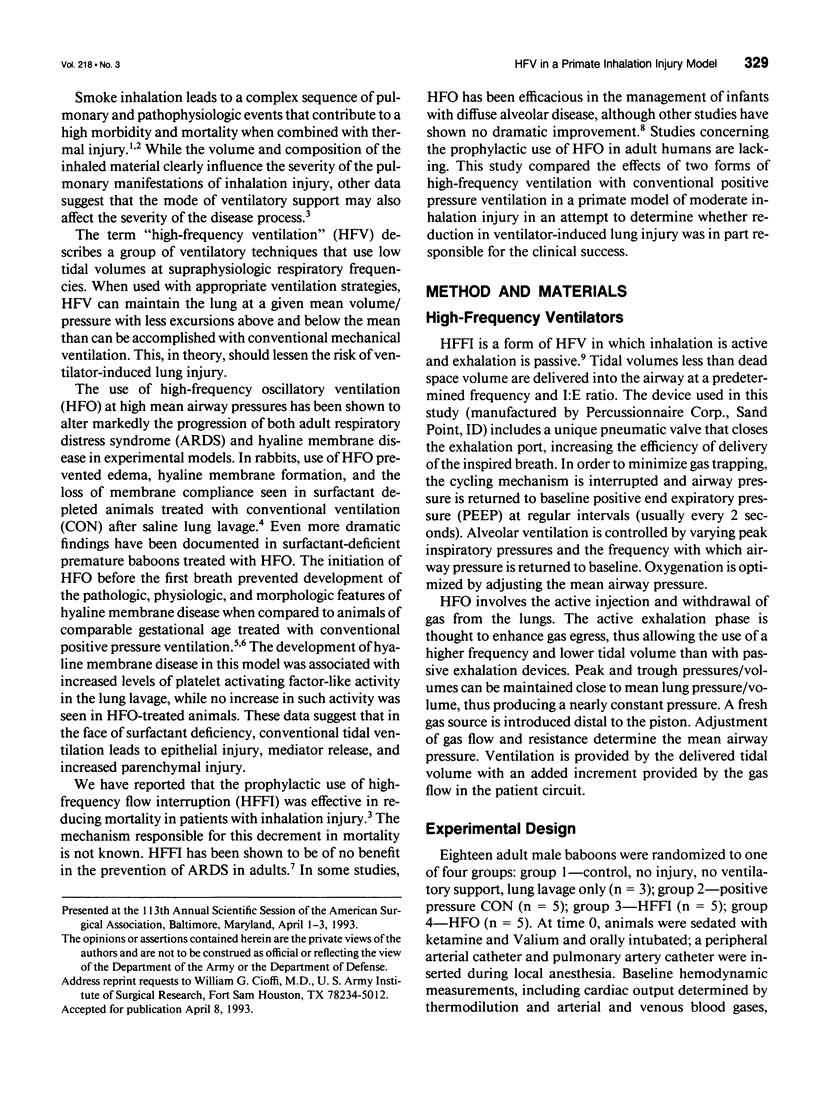
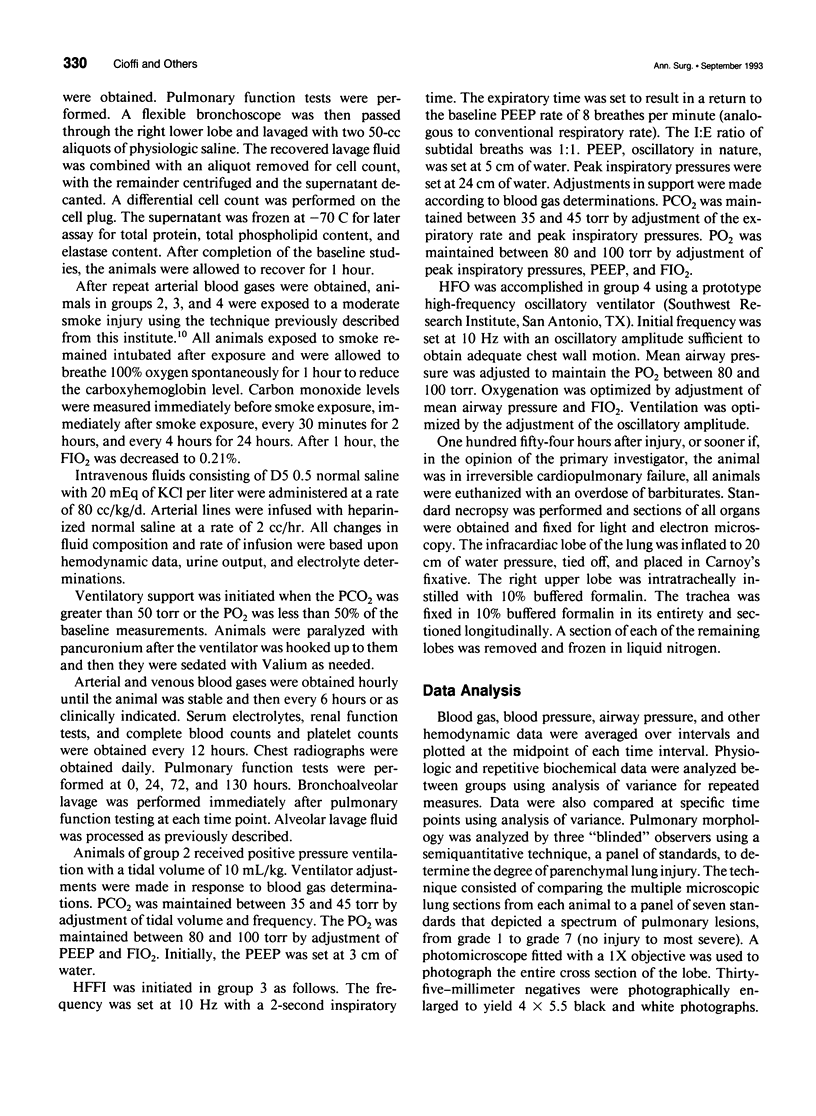
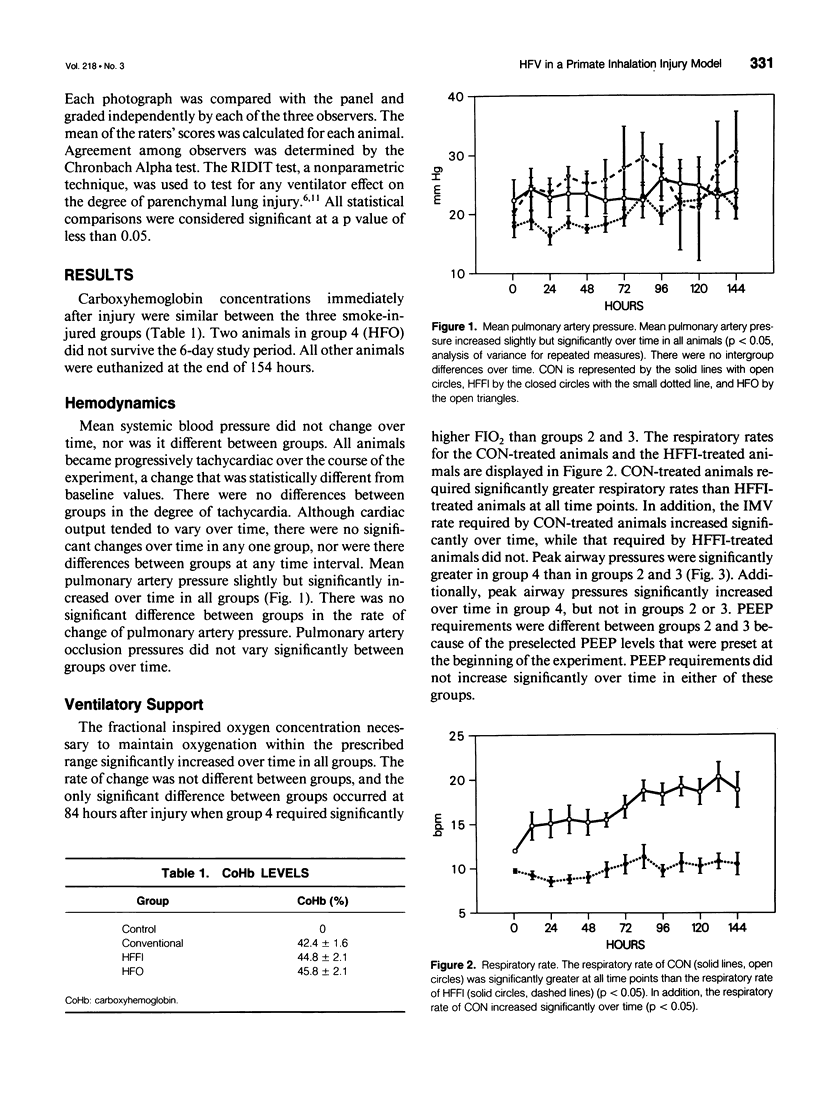
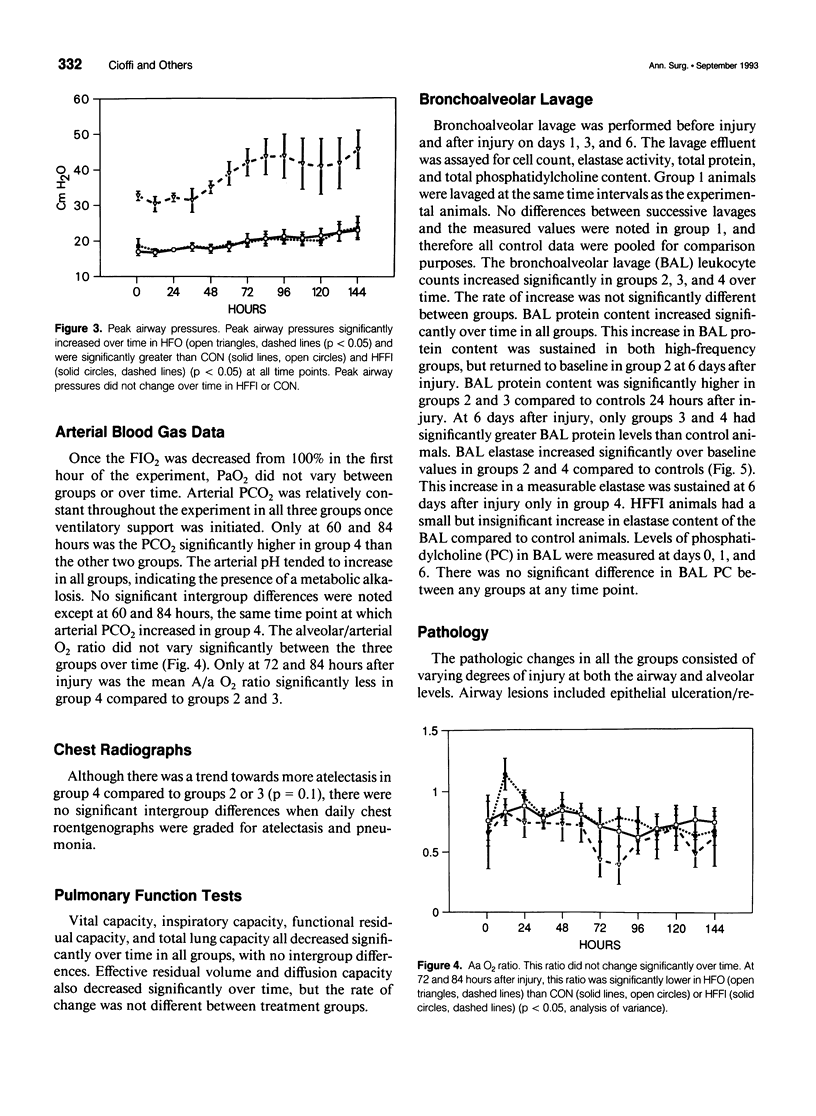
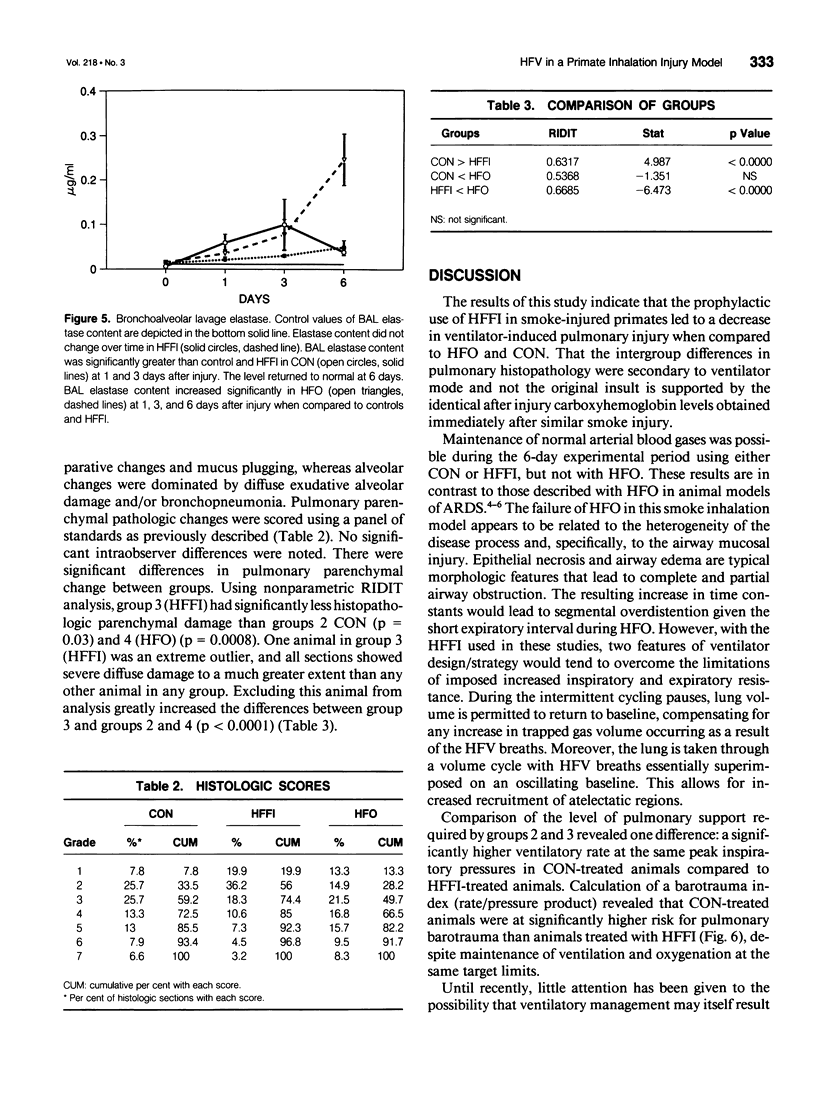
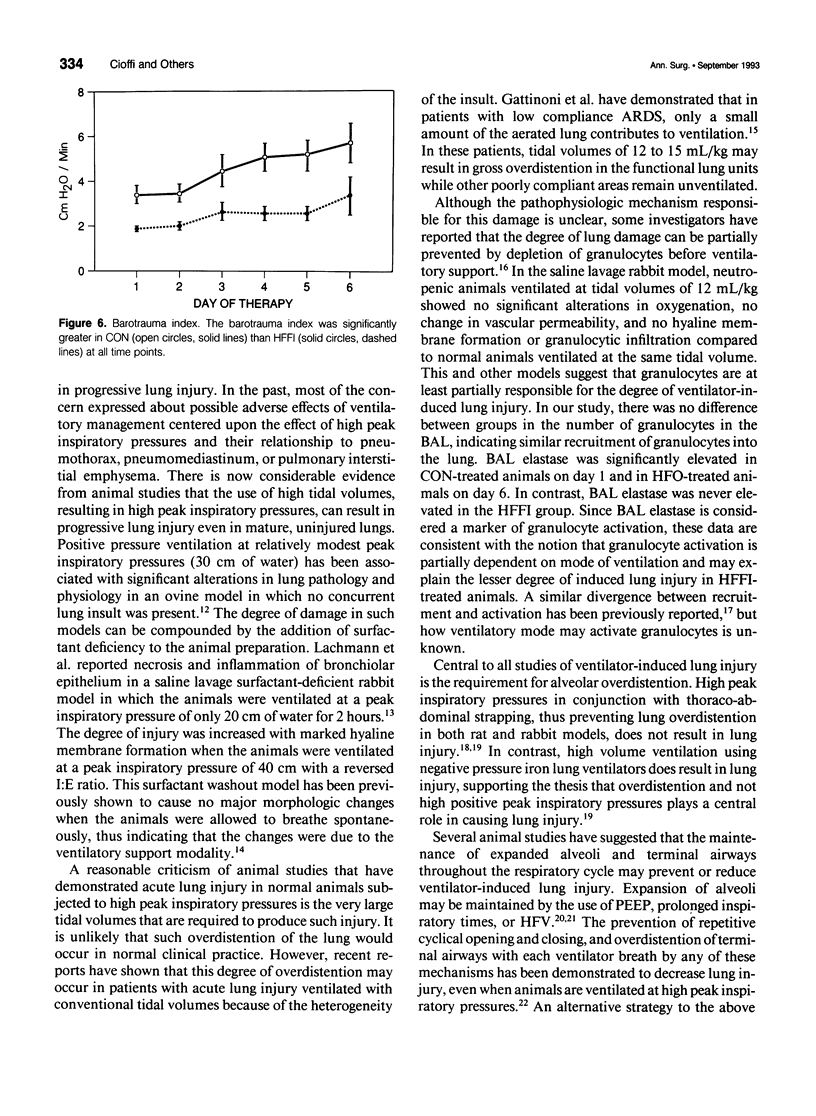
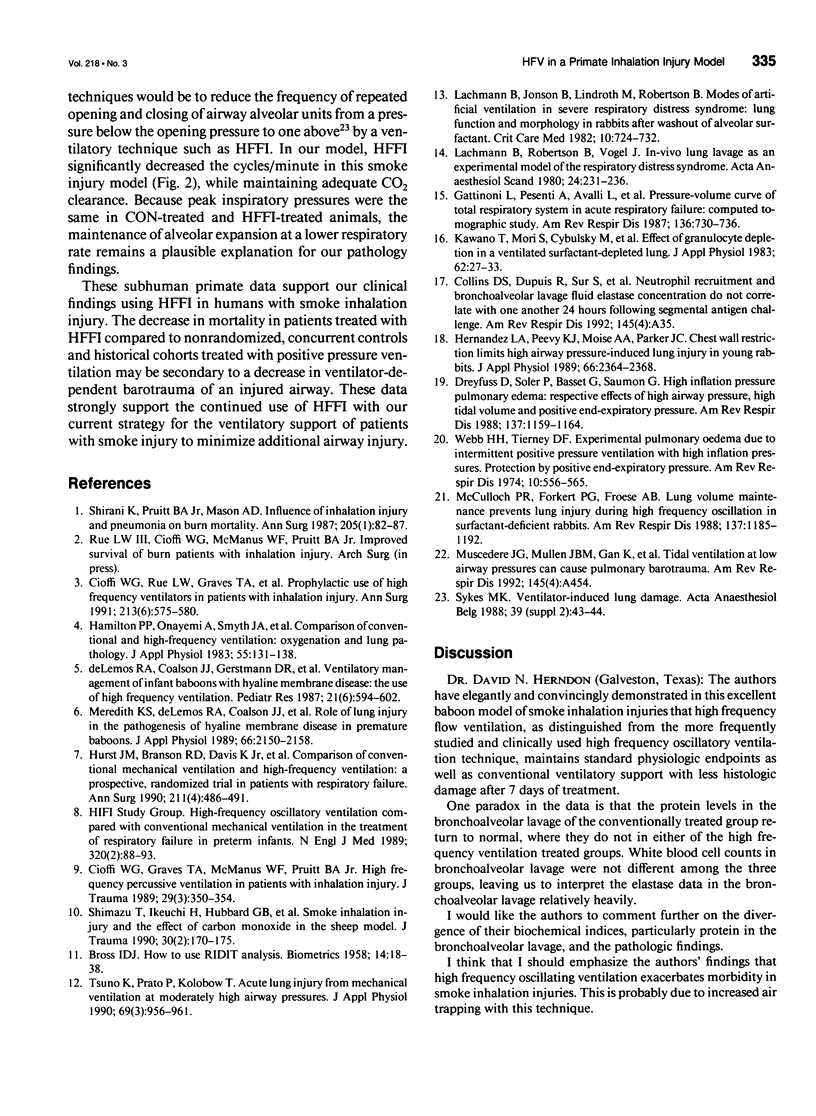
Selected References
These references are in PubMed. This may not be the complete list of references from this article.
- Cioffi W. G., Graves T. A., McManus W. F., Pruitt B. A., Jr High-frequency percussive ventilation in patients with inhalation injury. J Trauma. 1989 Mar;29(3):350–354. doi: 10.1097/00005373-198903000-00012. [DOI] [PubMed] [Google Scholar]
- Cioffi W. G., Jr, Rue L. W., 3rd, Graves T. A., McManus W. F., Mason A. D., Jr, Pruitt B. A., Jr Prophylactic use of high-frequency percussive ventilation in patients with inhalation injury. Ann Surg. 1991 Jun;213(6):575–582. doi: 10.1097/00000658-199106000-00007. [DOI] [PMC free article] [PubMed] [Google Scholar]
- Delemos R. A., Coalson J. J., Gerstmann D. R., Null D. M., Jr, Ackerman N. B., Escobedo M. B., Robotham J. L., Kuehl T. J. Ventilatory management of infant baboons with hyaline membrane disease: the use of high frequency ventilation. Pediatr Res. 1987 Jun;21(6):594–602. doi: 10.1203/00006450-198706000-00018. [DOI] [PubMed] [Google Scholar]
- Dreyfuss D., Soler P., Basset G., Saumon G. High inflation pressure pulmonary edema. Respective effects of high airway pressure, high tidal volume, and positive end-expiratory pressure. Am Rev Respir Dis. 1988 May;137(5):1159–1164. doi: 10.1164/ajrccm/137.5.1159. [DOI] [PubMed] [Google Scholar]
- Gattinoni L., Pesenti A., Avalli L., Rossi F., Bombino M. Pressure-volume curve of total respiratory system in acute respiratory failure. Computed tomographic scan study. Am Rev Respir Dis. 1987 Sep;136(3):730–736. doi: 10.1164/ajrccm/136.3.730. [DOI] [PubMed] [Google Scholar]
- Hamilton P. P., Onayemi A., Smyth J. A., Gillan J. E., Cutz E., Froese A. B., Bryan A. C. Comparison of conventional and high-frequency ventilation: oxygenation and lung pathology. J Appl Physiol Respir Environ Exerc Physiol. 1983 Jul;55(1 Pt 1):131–138. doi: 10.1152/jappl.1983.55.1.131. [DOI] [PubMed] [Google Scholar]
- Hernandez L. A., Peevy K. J., Moise A. A., Parker J. C. Chest wall restriction limits high airway pressure-induced lung injury in young rabbits. J Appl Physiol (1985) 1989 May;66(5):2364–2368. doi: 10.1152/jappl.1989.66.5.2364. [DOI] [PubMed] [Google Scholar]
- Hurst J. M., Branson R. D., Davis K., Jr, Barrette R. R., Adams K. S. Comparison of conventional mechanical ventilation and high-frequency ventilation. A prospective, randomized trial in patients with respiratory failure. Ann Surg. 1990 Apr;211(4):486–491. doi: 10.1097/00000658-199004000-00017. [DOI] [PMC free article] [PubMed] [Google Scholar]
- Kawano T., Mori S., Cybulsky M., Burger R., Ballin A., Cutz E., Bryan A. C. Effect of granulocyte depletion in a ventilated surfactant-depleted lung. J Appl Physiol (1985) 1987 Jan;62(1):27–33. doi: 10.1152/jappl.1987.62.1.27. [DOI] [PubMed] [Google Scholar]
- Lachmann B., Jonson B., Lindroth M., Robertson B. Modes of artificial ventilation in severe respiratory distress syndrome. Lung function and morphology in rabbits after wash-out of alveolar surfactant. Crit Care Med. 1982 Nov;10(11):724–732. doi: 10.1097/00003246-198211000-00005. [DOI] [PubMed] [Google Scholar]
- Lachmann B., Robertson B., Vogel J. In vivo lung lavage as an experimental model of the respiratory distress syndrome. Acta Anaesthesiol Scand. 1980 Jun;24(3):231–236. doi: 10.1111/j.1399-6576.1980.tb01541.x. [DOI] [PubMed] [Google Scholar]
- McCulloch P. R., Forkert P. G., Froese A. B. Lung volume maintenance prevents lung injury during high frequency oscillatory ventilation in surfactant-deficient rabbits. Am Rev Respir Dis. 1988 May;137(5):1185–1192. doi: 10.1164/ajrccm/137.5.1185. [DOI] [PubMed] [Google Scholar]
- Meredith K. S., deLemos R. A., Coalson J. J., King R. J., Gerstmann D. R., Kumar R., Kuehl T. J., Winter D. C., Taylor A., Clark R. H. Role of lung injury in the pathogenesis of hyaline membrane disease in premature baboons. J Appl Physiol (1985) 1989 May;66(5):2150–2158. doi: 10.1152/jappl.1989.66.5.2150. [DOI] [PubMed] [Google Scholar]
- Shimazu T., Ikeuchi H., Hubbard G. B., Langlinais P. C., Mason A. D., Jr, Pruitt B. A., Jr Smoke inhalation injury and the effect of carbon monoxide in the sheep model. J Trauma. 1990 Feb;30(2):170–175. doi: 10.1097/00005373-199002000-00006. [DOI] [PubMed] [Google Scholar]
- Shirani K. Z., Pruitt B. A., Jr, Mason A. D., Jr The influence of inhalation injury and pneumonia on burn mortality. Ann Surg. 1987 Jan;205(1):82–87. doi: 10.1097/00000658-198701000-00015. [DOI] [PMC free article] [PubMed] [Google Scholar]
- Sykes M. K. Ventilator-induced lung damage. Acta Anaesthesiol Belg. 1988;39(3 Suppl 2):43–44. [PubMed] [Google Scholar]
- Tsuno K., Prato P., Kolobow T. Acute lung injury from mechanical ventilation at moderately high airway pressures. J Appl Physiol (1985) 1990 Sep;69(3):956–961. doi: 10.1152/jappl.1990.69.3.956. [DOI] [PubMed] [Google Scholar]
- Webb H. H., Tierney D. F. Experimental pulmonary edema due to intermittent positive pressure ventilation with high inflation pressures. Protection by positive end-expiratory pressure. Am Rev Respir Dis. 1974 Nov;110(5):556–565. doi: 10.1164/arrd.1974.110.5.556. [DOI] [PubMed] [Google Scholar]


